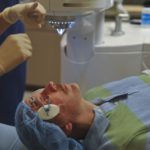Vision Maturity – A Critical Part of Development
A baby’s eye-sight is not developed at birth. A new born baby can focus only between 8 to 12 inches. There is a lot of development that takes place after birth.
First babies focus on faces. Generally in a week a baby can see the mother’s expressions.Then they focus on objects around them. Slowly they perceive mobile objects. By four months they can see the full range of colours. By around the fifth month they learn to blend images from both eyes into a single image. Around the age of 1 year, they start judging distances. For the next few years their eye muscles continue to gain strength and the nerve connections multiply.
While toddlers use their vision primarily for distance sight, school requires them to focus on closer objects for reading, writing and learning. Eye problems can arise from this change in focus. But children do not realise that they have a problem, because they assume it is normal to see things the way they do.
As you can see from the above description, the world that a child understands is based on the way it sees the world. The child obviously cannot report if he is seeing it right or wrong. It is therefore important to check a child’s eyes before the age of 3 and make sure that all is well with its vision development.
If parents see any signs of abnormality, they must report it to their doctor or see an ophthalmologist.
These signs include:
For Toddlers
Eyes crossed into nasal area
One still and one moving eye
Two eyes that appear different from each other
Eyes that cannot follow objects even after 3 months age


Later Stage
Headache
Rubbing of the eyes
Tilting the head to one side to see (one-eye vision)
Holding reading material very close to the eyes
We attain vision maturity by the age of 8/9 years. Our perception of the visual world is largely decided by what we see in these 9 years. Make sure your child is seeing right with regular eye check ups.





